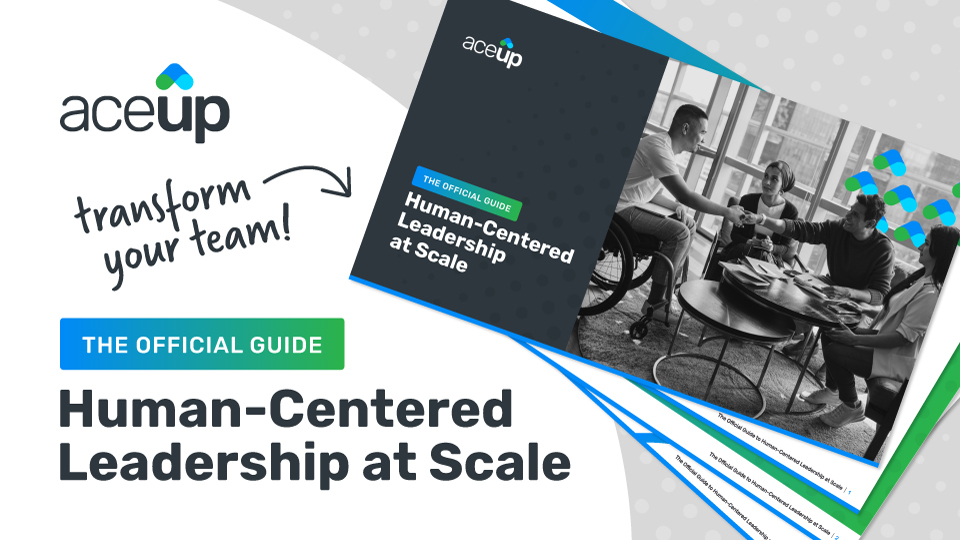How to Kick Off Your Leadership Development Strategy
Are you looking for ways to implement your leadership development strategy? As an HR professional, learning and development is a core part of your job and these days, a unified approach to leadership is more critical than ever.
Employees today demand a new social contract: one where individuals are seen (and respected) as whole human beings. This means we need more leaders who will proactively create these social contracts between the organizations they lead – and the people who bring them to life. We need human-centered leadership.

By understanding the basics principles behind scaling a successful program, you can help strengthen morale, psychological safety, trust, and drive transformational growth on a broad scale.
In this post, we’re outlining four practical steps to take when crafting an approach that suits the needs of any business — from small startups to large enterprises — and discuss how easy it is to implement these ideas. So read on for some helpful tips on scaling your leadership development strategy with coaching today.
1. Revisit the mission for your organization.
What does your organization stand for? When kicking off a leadership development strategy, it’s important to start at this highest level so that all of your hard work ties back to organizational goals and activities.
Revisiting the mission of your organization is an essential step in scaling up a successful leadership development program.
To do this, you could start by engaging in workshops or brainstorming sessions with key stakeholders from different departments. This will ensure everyone’s voice is heard and taken into consideration when creating strategies that support all team members.
Revisiting your organizational mission is never a bad idea! By doing so regularly, you can help keep your organization focused, accountable, and stay true to your north star.
2. Define your mission statement for leadership development.
Once you’ve revisited and fully understand your organization’s mission statement, it’s time to connect the dots to how this ties back to leadership development. From there, you can craft your why for developing human-centered leaders at your organization.
Aligning your leadership development strategy to initiatives with broader organizational objectives helps provide a clear and unified direction for leadership growth.
When crafting your mission statement, it is important to consider all stakeholders as well as employee sentiment. Are there departments in the organization that are more in need of human-centered leaders than others? Have you surveyed employees recently and what were the areas of concern? Make sure you consider a broad range of factors when writing your mission statement for leadership development.
3. Identify the key traits of effective leaders in your organization.
Similar to step 2, you can find out a lot about effective leaders in your organization by surveying employees to get their feedback on leadership effectiveness. To dive deeper, conduct 1:1 interviews with employees who are willing to share on a deeper level what type of leadership traits help to keep them engaged vs. not and the type of leaders they work well with.
From there, you can identify relevant leadership qualities such as compassion, empathy, emotional intelligence, and more. Collect a list of all the leadership qualities that drive engagement for your employees and go back to your team to brainstorm any additional qualities that tie back to your mission statement.
By taking all these factors into account when assessing leadership traits within your organization you can create meaningful strategies that will help drive transformational growth from the top down.
4. Establish a leadership development plan that aligns these traits to your mission.
Once you’ve identified the human-centered leadership skills that help drive engagement and performance for your employees, it is important to create a leadership development plan that aligns these traits to your leadership development mission – AND the organization’s mission.

When you start to roll out this process, make sure to include targeted assessments and learning activities to strengthen leadership competencies. In addition, be clear about your leadership goals and objectives for team members, while providing opportunities for participants to grow personally and professionally with programs such as leadership coaching and mentoring.
Once you’ve implemented your leadership development strategy, it’s time to bring this transformational growth to the next level with scale-enabled technology.
